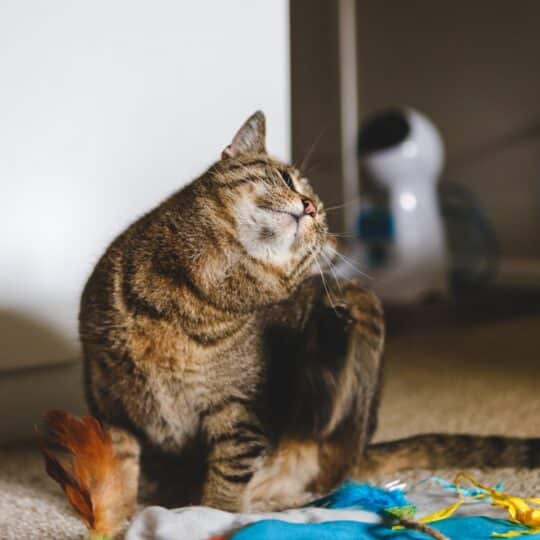Can Indoor Cats Lead to Flea Infestations in Homes?

Every pet owner wants to avoid fleas. It’s why we give dogs flea medication, and why we are often careful of allowing our pets to spend extended periods of time outside. It’s not only that we want to avoid fleas for our pets. We want to avoid them for our families as well, that often get bites in the crossfire.
Both humans and animals may encounter challenges with fleas. The discomfort from flea bites is notable, often leading to significant itchiness. Fleas are known for their rapid breeding and spreading capabilities, making it easy for an infestation to develop if not addressed promptly.
We use flea treatment to prevent fleas on dogs, and we often treat outdoor cats as well. But we also forget that any pet can be the cause of fleas, and that includes even cats that are 100% indoors.
Modes of Flea Transmission and How Indoor Cats Bring Them In
Fleas are usually transported into homes by pets that have been outside. Once inside, fleas can proliferate not just on the animal, but also within the household environment, including on furnishings and in carpeting. But while being outside may be the cause of fleas, they are not the only way that fleas can enter the home. In less common but still common causes, fleas have alternative methods of entry:
- Human Carriers – Although fleas cannot survive solely on human blood, they can still be transported into the home via human skin or clothing, or in items that you carry in from outside.
- Direct Entry – Given their nature, fleas may enter homes through open doors or windows, or even small structural openings, seeking new environments and hosts. They may, quite literally, hop their way into your home, but even if they’re not so brave, if your cat sleeps near a door or window then they can easily sense it and crawl through a small space to get to your cat.
- Carrier Pests and Animals – Fleas might also enter homes via other animals, such as rodents, or through temporary pet guests. If you’re someone that has friends with dogs that have been to your home even briefly, they could have carried fleas inside.
- Furnishings – On occasion, fleas can be introduced into a home through infested furniture or carpets, surviving for up to two weeks without a host.
All of these mean that it is not only possible, but probable, that an indoor cat is at least at risk for fleas. Not all indoor cats will get them, but staying indoors does not mean that your cat – or your family – is entirely safe.
For existing flea issues, administering flea treatment to pets is the primary resolution. To prevent initial infestations, investing in comprehensive pest control measures is highly effective. Pest control services provide year-round protection against various pests, ensuring a secure living environment, and they can treat the fleas that may already be on your property. For more information, contact ExtermPRO today.
Special Offer for New Customers
$50 Off Complete Pest Control Services
Hurry! Offer Expires July 15, 2025